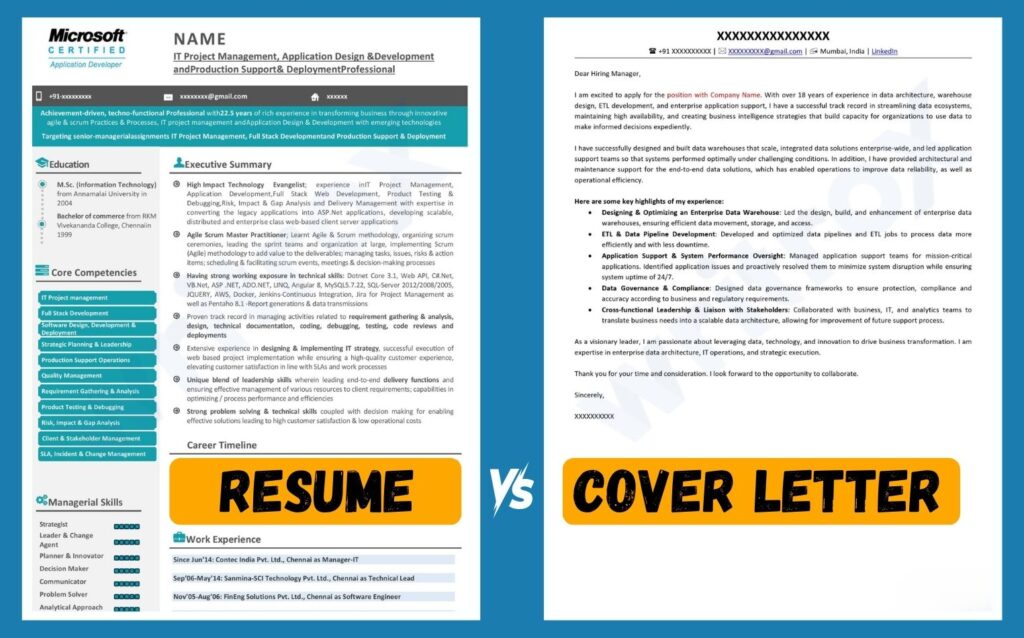Why Your Resume Isn’t Getting Shortlisted & How a Resume Service Can Help
From applying for jobs for weeks and months & you are sending out applications almost everywhere. Then you wait for the replies from these companies. But for the companies that never come on time. The silence can be deafening. You actually start wondering. What’s wrong with me and my skills? Or is something wrong with my resume? If that sounds actually familiar, you are not alone in this. Most of the job seekers today are actually facing this situation. The real truth is that your actual qualifications can be perfect for the roles that you’re applying for. But for the resume that does not make it past just the first round of screening. In the massively competitive job market, having just the right skills is one part of the equation. You need a resume that can actually be directly seen by human eyes. Let’s explore why your resume is getting rejected before the human eyes can see it and whether the resume writing services can make a difference. Let’s also see how professional help can actually turn that around. The Hidden Gatekeepers: ATS Systems The ATS (Applicant Tracking System) can serve as the filter for most of the job applications today! These types of automated systems scan each and every resume before it can even reach the evaluator, thus evaluating candidates for the predefined criteria. The ATS software searches for any specific type of keywords that can match the job description along with checking for proper formatting that allows for easy applications based on selected predefined criteria. The ATS software is designed to search for the right job description along with checking proper formatting and allows for proper parsing and does verification of relevant experience for the role requirements. Resumes that are unable to meet these expectations and rules are rejected in an automatic manner, generally without any notification applied for the applicant. This directly means that the candidates that are highly qualified can be easily eliminated from consideration before a hiring manager basically reviews the application. Understanding how these systems work is important for the creation of resumes that do reach humans for review, who can make hiring decisions. Common ATS failures include: If your resume is not clear and lacking specific results or burying important information, it gets set aside. The hiring manager doesn’t have the time for digging through the descriptions to find your qualifications. The Generic Resume Problem Most of the common reasons directly get rejected, and that’s too generic. Sending this type of resume is like wearing a basic outfit to each and every wedding, party, and job interview. This will not work. Each of the roles requires different experiences and skills. A great resume needs to be tailored for highlighting the specific qualifications the employer is seeking. Generic resumes can fail because: When the resume looks like it has been sent to any company for any industry. Hiring managers generally assume you just are not putting in the effort to understand the right needs. How Resume Writing Services Make a Difference This is where the professionals that can help can change everything. Resume writing services that can specialize towards creating documents that can pass the ATS tests and that human scan test. They can understand exactly what hiring managers want & are looking for and how you can present yourself in the most compelling way. A professional resume that writes for several advantages for the table: The Investment That Pays Off Some people generally hesitate towards the resume writing services because of the costs involved. But think of a different scenario: is your time worth it? How many opportunities have you actually missed when you struggle with the resume rejections? How much more can you earn while in a better position? Think of this as a professional resume and as an investment in your career. A perfectly crafted resume can not just get you interview opportunities, but it can also help you with great job offers as well, along with higher salaries. The major return on investment can far exceed the initial cost. When you work with the resume writing service, you are paying for document creation plus the expert knowledge & experience that these guys bring. Taking Control of Your Job Search Your resume is more than just an outline of your work history. It can be a marketing tool that informs hiring managers of the value you bring. Your whole job search falls when it’s not effective. Remember, a great resume does more than just guarantee a job; instead, a badly made resume can get you a rejection. Investing in a professional resume can be a great and missing piece for the job search puzzle. This is not about making something that you’re not—this is about making the right impact. The resume services can provide the right guidance. This can help you in seeing your experience generally from the view of hiring managers and presenting that in the most effective ways possible. These resume services can often be your first—and sometimes only—the right chance of making an impression. The Bottom Line If you have gotten tired of sending multiple job applications, this is the right time to reconsider your resume & job strategy. The problem is not your experience; the problem is exactly how it’s represented. Professionals’ resumes do help and can be a major missing piece for the job search puzzle. The career is actually worth fighting for. Don’t just let an inefficient and weak resume stand between you and the opportunities that you can easily go for. With the right mindset and presentation, your qualification can help you get the attention for the merit. And that’s exactly where the professional resume writing services can deliver. The right path towards a great opportunity can easily start with a single document. Do make sure that this is working for you.
Why Your Resume Isn’t Getting Shortlisted & How a Resume Service Can Help Read More »












